2019-02-21 - Nº 199

Editorial
Esta é a Newsletter Nº 199 que se apresenta com o mesmo formato que as anteriores. Se gostar da Newsletter partilhe-a!
Todas as Newsletters encontram-se indexadas no link.
Esta Newsletter tem os seguintes tópicos:
Faz hoje anos que nascia, em 1791, John Mercer. Este químico e industrial inglês inventou o processo de mercerização para o tratamento de algodão que ainda está em uso hoje e foi um pioneiro na fotografia colorida. A partir dos 16 anos, e durante toda a sua vida, ele investigou e desenvolveu corantes têxteis químicos. No final da sua vida, em 1844, ele descobriu que quando o algodão é tratado com produtos químicos cáusticos, ele fica mais espesso e mais curto - portanto, mais resistente e resistente a encolhimento. Além disso, o algodão era mais facilmente tingido, necessitava de 30% menos corante, mais absorvente e poderia receber um atraente brilho sedoso. Ele chamou ao seu processo de mercerização e patenteou-o em 1850. A mercerização foi aplicada a muitos outros materiais, como pergaminho e tecido de lã, e continua sendo uma parte importante do processo de acabamento do algodão hoje.
Faz igualmente anos hoje que nascia, em 1951, William McDonough. Este arquitecto e engenheiro ambiental norte-americano, promove o design de produtos para um futuro sustentável “upcycling” - para substituir a mera reciclagem por métodos para processar materiais de forma a melhorá-los para reutilização. Com Michael Braungart, ele escreveu um livro, Cradle to Cradle, no qual cunhou a palavra “upcycling”. Por exemplo, quando o papel é reciclado agora, o produto perde qualidade à medida que o comprimento da fibra diminui, precisa de mais cloração e está contaminado com tinta tóxica. Em vez disso, as árvores podem ser salvas para o papel de reabastecimento de oxigénio. Páginas leves impressas podem ser feitas de resinas plásticas que podem ser recicladas indefinidamente, com tintas que são lavadas em banhos a 180 graus.
Nesta semana que passou ficámos a saber que a Western Digital publicou uma abstração de design de nível de transferência de registo (RTL) do seu RISC-V com núcleo SweRV projetado internamente. O núcleo SweRV é um dos vários projetos RISC-V que a empresa desenvolveu como parte de seus esforços para liderar a ISA, seu ecossistema, e promover a sua própria transição para outros núcleos de CPU que não sejam licenciados e que não cobrem royalties. De acordo com os objectivos de design mais abertos do RISC-V, a publicação da representação de alto nível da SweTV significa que terceiros podem usá-la nos seus próprios projectos de chip, o que popularizará não apenas o design específico, mas também a arquitectura RISC-V em geral.
Também esta semana a sonda Japonesa Hayabusa-2 aterrou num asteróide na tentativa de obter amostras de rocha da sua superfície. A agência espacial japonesa (Jaxa) tinha planeado inicialmente realizar a operação de aterragem em Outubro do ano passado. Mas a superfície do asteróide é muito mais acidentada do que o esperado, com numerosas pedras pesadas dificultando a localização de um local grande e plano o suficiente para ser feita a recolha das amostras.
Hoje a SpaceX lançará o foguetão Falcon 9 em direcção à Lua com um modulo lunar israelita. Se a aterragem do módulo for bem sucedido, este será o primeiro feito com financiamento privado a alcançar a superfície lunar. A sonda, chamada "Beresheet" (no começo), será lançada às 20h45. EST (0145 GMT, 22 de Fevereiro) a partir do Cabo Canaveral, na Florida. Aproximadamente 30 minutos após a descolagem do Falcon 9, o Beresheet separar-se-á do foguete numa órbita de transferência a uma altitude de cerca de 60.000 quilómetros. Dois minutos após a separação, a nave espacial enviará sua primeira comunicação ao centro de controle da missão, em Yehud, Israel.
Na Newsletter desta semana apresentamos diversos projetos de maker. É apresentada a revista Hackspace nº 16 assim como quatro livros sobre a linguagem Go.
 João Alves ([email protected])
João Alves ([email protected])
O conteúdo da Newsletter encontra-se sob a licença  Creative Commons Attribution-NonCommercial-ShareAlike 4.0 International License.
Creative Commons Attribution-NonCommercial-ShareAlike 4.0 International License.
Novidades da Semana

Western Digital's RISC-V "SweRV" Core Design Released For Free
"Western Digital has published a register-transfer level (RTL) design abstraction of its in-house designed SweRV RISC-V core. The SweRV core is one of several RISC-V projects the company as undertaken as part of their effort to spearhead the ISA, its ecosystem, and foster their own transition away from licensed, royalty-charging CPU cores. In accordance with the more open design goals of RISC-V, the publication of the high-level representation of SweTV means that third parties can use it in their own chip designs, which will popularize not only the particular core design, but also the RISC-V architecture in general. The RTL design abstraction of Western Digital’s RISC-V SweRV core is now available at GitHub. The design is licensed under the Apache 2.0 license, which is a very permissive (and non-copyleft) license that allows the core to be used free of charge, with or without modifications, and without requiring any modifications to be released in-kind. In fact the requirements of the license are quite slim; besides requiring appropriate attribution, the only other notable restriction is that third party developers cannot use Western Digital’s brands to mark their work." [...]

Hayabusa-2: Japan spacecraft touches down on asteroid
"A Japanese spacecraft has touched down on an asteroid in an attempt to collect a sample of rock from the surface. The Hayabusa-2 probe was trying to grab the sample from a pre-chosen site on the asteroid Ryugu just before 23:00 GMT on 21 February. The spacecraft reached asteroid Ryugu in June 2018 after a three-and-a-half-year journey from Earth. It is expected to return to Earth with the rocky material it has cached in 2020. During sample collection, the spacecraft was set to approach the 1km-wide asteroid with an instrument called the sampler horn. On touchdown, a 5g projectile made of the metal tantalum should have been fired into the rocky surface at 300m/s." [...]

To the Moon! SpaceX to Launch Israeli Lunar Lander (and More) on Thursday
"SpaceX will launch an Israeli robotic lunar lander during the company's Falcon 9 rocket launch tomorrow (Feb. 21). If the lander succeeds, this will be the first privately funded moonshot to reach the lunar surface. The lander, called "Beresheet" (in the beginning), will launch at 8:45 p.m. EST (0145 GMT, Feb. 22) from Cape Canaveral Air Force Station in Florida. You can watch the launch live on Space.com courtesy of SpaceX or directly through SpaceX's webcast page or on Facebook via the lander's creators. The Beresheet lander is a joint venture between Israeli nonprofit SpaceIL — one of the participants in the Google Lunar X Prize, which challenged companies to land spacecraft on the moon — and Israel Aerospace Industries, the country's largest aerospace and defense company. While the $30 million Google Lunar X Prize challenge ended with no winner in 2018, several participating companies said they are continuing work on their concepts." [...]
Outras Notícias

STMicroelectronics' New Full-Color Ambient Light Sensor with Flicker Detect Boosts Camera Performance in Smartphone and IoT Devices
"STMicroelectronics (NYSE: STM), a global semiconductor leader serving customers across the spectrum of electronics applications, has released an innovative full-color ambient light sensor (ALS) that helps smartphones take better pictures and present more visually accurate data on screen displays. By simultaneously providing scene color temperature, ultra-violet (UVA) radiation level, and lighting frequency information, the VD6281 lets the camera correct white balance and enhance color presentation, and sets appropriate exposure times for the camera to avoid flicker artefacts and eliminate banding in pictures and videos, especially in scenes lit with contemporary LED sources. STMicroelectronics’ New Full-Color Ambient Light Sensor with Flicker Detect Boosts Camera Performance in Smartphone and IoT Devices “Leveraging the Company’s extensive camera system know-how, ST’s new VD6281 offers customers a state-of-the-art multispectral ambient light sensor,” said Eric Aussedat, General Manager of ST’s Imaging Division. “Our roadmap for ALS and flicker sensors is an ideal complement to ST’s market-leading FlightSense™ Time-of-Flight (ToF) product portfolio. With a growing number of high-quality, high-resolution cameras per phone, our goal is to offer an advanced solution to assist white-balance correction and remove flicker artefacts in smartphone camera images. Mobiles equipped with VD6281 were already released in 2018, and many others will be coming soon.” With its small form factor of 1.83 x 1.0 x 0.55mm, the VD6281 is the smallest multispectral ambient light sensor available, allowing integration in bezel-free smartphones with small notches and inside smartwatches, where a high screen ratio is at a premium." [...]
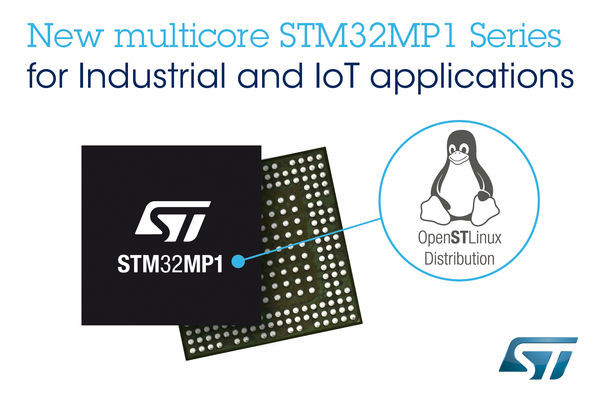
STMicroelectronics Launches STM32MP1 Microprocessor Series with Linux Distribution to Speed IoT and Smart Industry Innovation
"STMicroelectronics (NYSE: STM), a global semiconductor leader serving customers across the spectrum of electronics applications, is applying its Arm® Cortex® expertise to expand the capabilities of its industry-leading STM32 MCU portfolio to applications requiring even more performance, resources and large open-source software. The introduction of the STM32MP1 multicore microprocessor series with compute and graphics support combined with power-efficient real-time control and high feature integration will facilitate development of high-performance solutions for Industrial, Consumer, Smart Home, Health and Wellness applications. STMicroelectronics Launches STM32MP1 Microprocessor Series with Linux Distribution to Speed IoT and Smart Industry Innovation STM32MP1 series microprocessor (MPU) products leverage the strong, proven STM32*-family ecosystem from ST and its partners, including tools and technical support. Moreover, with the release of OpenSTLinux as a mainlined, open-source Linux distribution, it extends the STM32 family to address important customer requirements for real-time, power-constrained applications. With this combination of MPU and software, ST has assembled all the pieces to match the product supply requirements of many industrial and professional applications. Of course, the STM32MP1 is included in ST’s rolling 10-years longevity commitment." [...]
Ciência e Tecnologia

Superinsulators to become scientists' quark playgrounds
"Interdisciplinary research team achieves fundamental quark breakthrough. Scientists widely accept the existence of quarks, the fundamental particles that make up protons and neutrons. But information about them is still elusive, since their interaction is so strong that their direct detection is impossible and exploring their properties indirectly often requires extremely expensive particle colliders and collaborations between thousands of researchers. So, quarks remain conceptually foreign and strange like the Cheshire cat in “Alice’s Adventures in Wonderland,” whose grin is detectable — but not its body. An international group of scientists that includes materials scientist Valerii Vinokur from the U.S. Department of Energy’s (DOE) Argonne National Laboratory have developed a new method for exploring these fundamental particles that exploits an analogy between the behavior of quarks in high-energy physics and that of electrons in condensed-matter physics. This discovery will help scientists formulate and conduct experiments that could provide conclusive evidence for quark confinement, asymptotic freedom, and other phenomena, such as whether superinsulators can exist in both two and three dimensions." [...]

Faster and more energy-efficient modulator sets to revolutionise optoelectronic industry
"A research team comprising members from City University of Hong Kong (CityU), Harvard University and renowned information technologies laboratory Nokia Bell Labs has successfully fabricated a tiny on-chip lithium niobate modulator, an electro-optic modulator which is more efficient, with faster data transmission and lower costs. It is set to revolutionise the industry and CityU researchers are looking into its application for the coming 5G communication. Electro-optic modulators are critical components in modern communications. They convert high-speed electronic signals in computational devices such as computers to optical signals before transmitting them through optical fibres. However, the existing and commonly used lithium niobate modulators require a high drive voltage which is significantly higher than that provided by a typical CMOS (complementary metal-oxide-semiconductor) circuitry. Hence an electrical amplifier that makes the whole device bulky, expensive and high energy-consuming is needed." [...]
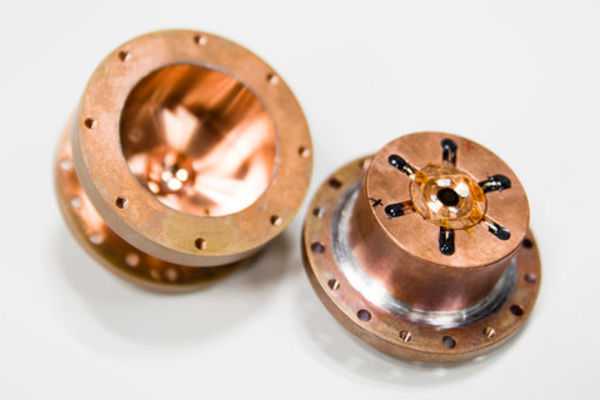
Questions in Quantum Computing: How to Move Electrons with Light
"Tiny moving particles make up everything in our physical world— including modern electronics, whose function relies on the movement of negatively-charged electrons. Physicists strive to understand the forces that push these particles into motion, with the goal of harnessing their power in new technologies. Quantum computers, for instance, employ a fleet of precisely controlled electrons to take on goliath computational tasks. Recently, researchers at the Okinawa Institute of Science and Technology Graduate University (OIST) demonstrated how a form of light, called microwaves, cuts in on the movement of electrons. The findings may help improve quantum computing. Normal computers run on zeros and ones, and this binary code limits the volume and type of information the machines can process." [...]

The first walking robot that moves without GPS
"Desert ants are extraordinary solitary navigators. Researchers at CNRS and Aix-Marseille University, in the Institut des Sciences du Mouvement – Étienne Jules Marey (ISM), were inspired by these ants as they designed the first walking robot that can move without GPS: AntBot. AntBot can explore its environment randomly and go home automatically, without GPS or mapping. Its secret is a celestial compass sensitive to the sky's polarized light. This work, published on February 13, 2019 in Science Robotics, opens up new strategies for navigation in autonomous vehicles and robotics. Human eyes are insensitive to polarized light and ultraviolet radiation, but that is not the case for ants, who use it to locate themselves in space." [...]
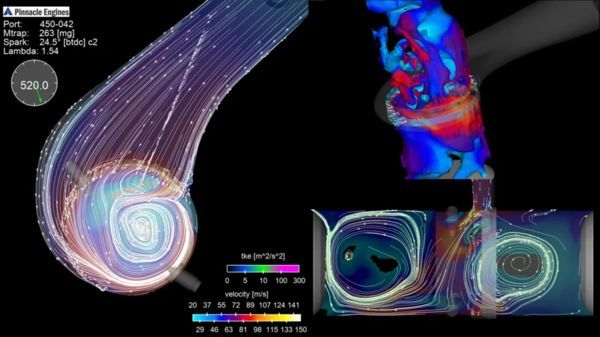
Researchers modeled design concepts for innovative opposed-piston engine on Titan supercomputer
"The Pinnacle Engines opposed-piston cylinder shown in three different views. Visualizations illustrate the generation of coherent flow structures and their collapse during the compression stroke, which leads to high levels of turbulence before combustion. Pinnacle Engines researchers analyzed fluid dynamics and combustion behavior to optimize the design of the combustion system for maximum engine efficiency and reduced pollutant emissions. Video courtesy of Clayton Naber, Pinnacle Engines. With more vehicles in use worldwide than ever before, engine makers are competing to deliver cleaner, more efficient engines at affordable prices. To gain an edge on the competition, California-based small business Pinnacle Engines is laser-focused on a unique engine design." [...]

XO-rbitant Strength: Electric Exoskeletons Give Wearers The Strength Of A Forklift But A Gentler Touch
"In popular culture, automation is generally synonymous with putting people out of work. But in real life it can do the opposite, making workers more effective at the jobs they already have. That’s the case with a full-body exoskeleton under development at Sarcos Robotics, which expects to release a commercial product in early 2020. The machine, the Guardian XO, wraps around a human body and gives its wearer the ability to lift objects with the strength of a forklift and handle them with the deftness of human hands. A Salt Lake City firm with investment from GE Ventures and others, Sarcos is offering the exoskeleton for a wide range of commercial applications, including work in factories and mines and at construction sites. Full-bodied, powered exoskeletons have been under development for decades, but earlier prototypes were typically tethered to a power source." [...]

Collaboration sparks sustainable electronics manufacturing breakthrough
"Simon Fraser University and Swiss researchers are developing an eco-friendly, 3D printable solution for producing wireless Internet-of-Things (IoT) sensors that can be used and disposed of without contaminating the environment. Their research has been published as the cover story in the February issue of the journal Advanced Electronic Materials. SFU professor Woo Soo Kim is leading the research team's discovery involving the use of a wood-derived cellulose material to replace the plastics and polymeric materials currently used in electronics. Additionally, 3D printing can give flexibility to add or embed functions onto 3D shapes or textiles, creating greater functionality. “Our eco-friendly 3D printed cellulose sensors can wirelessly transmit data during their life, and then can be disposed without concern of environmental contamination,” says Kim, a professor in the School of Mechatronic Systems Engineering. The SFU research is being carried out at PowerTech Labs in Surrey, which houses several state-of-the-art 3D printers used to advance the research." [...]

BYU researchers unfold new class of mechanical devices
""Developable mechanisms" are built into the surfaces of structures Real science has finally caught up to the science fiction of Iron Man’s transforming exoskeleton suit. In a paper published today in Science Robotics, engineers at Brigham Young University detail new technology that allows them to build complex mechanisms into the exterior of a structure without taking up any actual space below the surface. This new class of mechanisms, called “developable mechanisms,” get their name from developable surfaces, or materials that can take on 3-D shapes from flat conformations without tearing or stretching, like a sheet of paper or metal. They reside in a curved surface (like, say, the arms of Iron Man’s suit) and can transform or morph when deployed to serve unique functions. When not in use, they can fold back into the surface of the structure seamlessly. “These new discoveries make it possible to build complex machines that integrate with surfaces to be very compact, but can deploy and do complex tasks,” said researcher Larry Howell, professor of mechanical engineering at BYU." [...]

Directly-cooled electric motor made from polymer materials
"Making electric cars lighter also involves reducing the weight of the motor. One way to do that is by constructing it from fiber-reinforced polymer materials. Researchers at the Fraunhofer Institute for Chemical Technology ICT are working together with the Karlsruhe Institute of Technology KIT to develop a new cooling concept that will enable polymers to be used as motor housing materials. And that’s not the only advantage of the new cooling concept: it also significantly increases the power density and efficiency of the motor compared to the state of the art. The two key components of an electric drive train are the electric motor and the battery. And there are three issues that play a particularly important role when it comes to using an electric motor for eco-friendly mobility: high power density, a compact configuration that fits snugly within the electric vehicle, and high levels of efficiency." [...]

NRL, AFRL Develop Direct-Write Quantum Calligraphy in Monolayer Semiconductors
"Scientists at the U.S. Naval Research Laboratory (NRL) and the Air Force Research Laboratory (AFRL) have developed a way to directly write quantum light sources, which emit a single photon of light at a time, into monolayer semiconductors such as tungsten diselenide (WSe2). Single photon emitters (SPEs), or quantum emitters, are key components in a wide range of nascent quantum-based technologies, including computing, secure communications, sensing and metrology. In contrast with conventional light emitting diodes which emit billions of photons simultaneously to form a steady stream of light, an ideal SPE generates exactly one photon on demand, with each photon indistinguishable from another. These characteristics are essential for photon-based quantum technologies under development. In addition, such capabilities should be realized in a material platform which enables precise, repeatable placement of SPEs in a fully scalable fashion compatible with existing semiconductor chip manufacturing." [...]
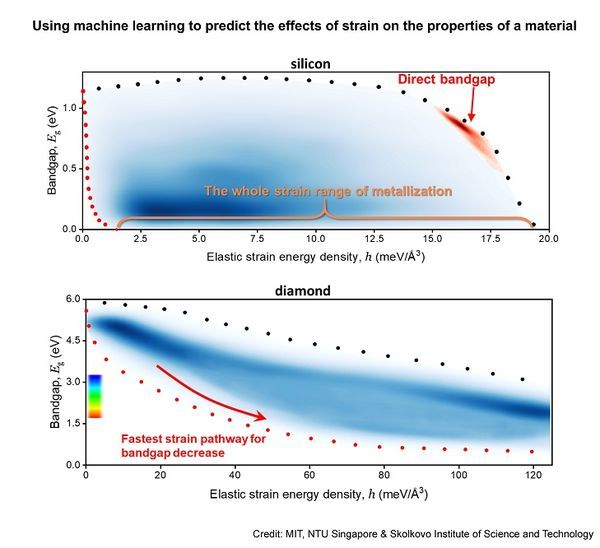
NTU, MIT and Russian scientists develop AI to predict and engineer material properties
"Scientists from Nanyang Technological University, Singapore (NTU Singapore), in collaboration with researchers from the Massachusetts Institute of Technology (MIT) in the United States and the Skolkovo Institute of Science and Technology in Russia, have developed a machine learning approach that can predict changes to the properties of materials from straining the material. This work could lead to the possibility of engineering new materials with tailored properties for potential use in communications, information processing, and energy fields. In a paper published today (12 Feb) in the Proceedings of the National Academy of Sciences, the authors demonstrated their use of Artificial Intelligence to identify the most energy-efficient strain pathways that could transform diamond into more effective semiconductors. When a semiconductor material is bent or strained, the atoms in its structure are perturbed, thus changing its properties such as how it conducts electricity, heat or the transmission of light. This process is known as ‘strain engineering’. Conventional methods of studying and mapping the effects of strain engineering on a material rely on trial and error lab experiments and computer modelling on a limited scale." [...]

See, Think, Predict: Engineers build a soft robotics perception system inspired by humans
"An international team of researchers has developed a perception system for soft robots inspired by the way humans process information about their own bodies in space and in relation to other objects and people. They describe the system, which includes a motion capture system, soft sensors, a neural network, and a soft robotic finger, in the Jan. 30 issue of Science Robotics. The researchers’ ultimate goal is to build a system that can predict a robot’s movements and internal state without relying on external sensors, much like humans do every day. In their Science Robotics paper, they show that they have achieved this goal for a soft robotic finger. The work has applications in human-robot interaction and wearable robotics, as well as soft devices to correct disorders affecting muscles and bones. The system is meant to mimic the various components required for humans to navigate their environment: the motion capture system stands in for vision; the neural network stands in for brain functions; the sensors for touch; and the finger for the body interacting with the outside world." [...]

A transformer to drive the transition from AC to DC
"EPFL researchers have developed a compact and efficient medium-frequency transformer. Their device is poised to enhance the flexibility and efficiency of tomorrow’s smart grids and DC power distribution networks. An EPFL-made prototype has been thoroughly tested and presented in several tutorials designed for experts from the academic and industrial worlds. For more than 100 years, electricity grids around the world have worked with alternating current (AC). However, direct current (DC) is now back in fashion and – thanks to advances in power electronics – is already becoming the new norm. Today, most of our appliances such as computers, LEDs and electric cars all run on DC." [...]
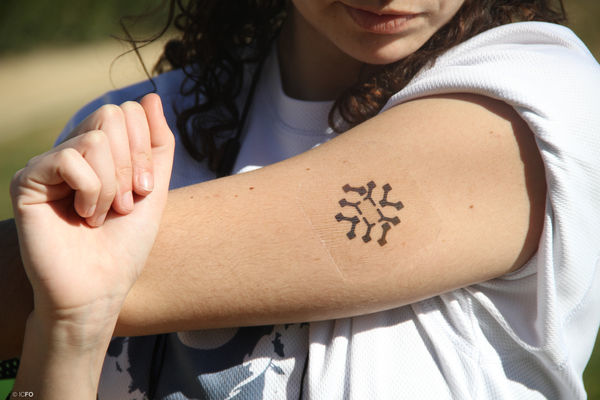
Graphene-based technology for wearable health monitoring, food inspection and night vision
"The Graphene Pavilion, organised by the Graphene Flagship and supported by the European Commission and GSMA, is returning to Mobile World Congress (MWC) 2019 with over 20 graphene-based prototypes, four of which are developed by the Graphene Flagship partner ICFO, based in Barcelona. These technologies aim to turn mobile phones into life saving devices. The first of ICFO's devices on display will allow customers to monitor their level of exposure to sunlight through a UV sensor. Designed as a flexible, transparent and disposable patch, it connects to a mobile device and alerts the user once he or she has reached a defined threshold of sun exposure. Using the same core technology as the UV patch, ICFO's fitness band is being developed to measure heart rate, hydration, oxygen saturation, breathing rate and temperature, while monitoring the user when he or she is exercising, for example. However, the fitness band does more than simply measure physical activity." [...]
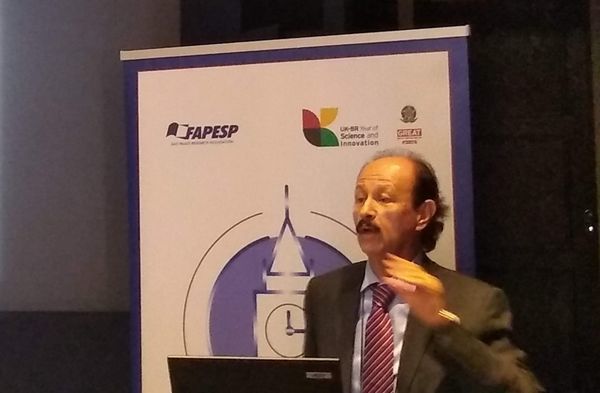
Lithium-air batteries can store energy for cars, houses and industry
"Current lithium ion battery technology will probably not be able to handle the coming decades’ huge demand for energy. It is estimated that by 2050, electricity will make up 50% of the world’s energy mix. Today that rate is 18%. But installed capacity for renewable energy production is expected to increase fourfold. This will require batteries that are more efficient, cheaper and environmentally friendly. One of the alternatives being studied today in many parts of the world is the lithium-air battery." [...]
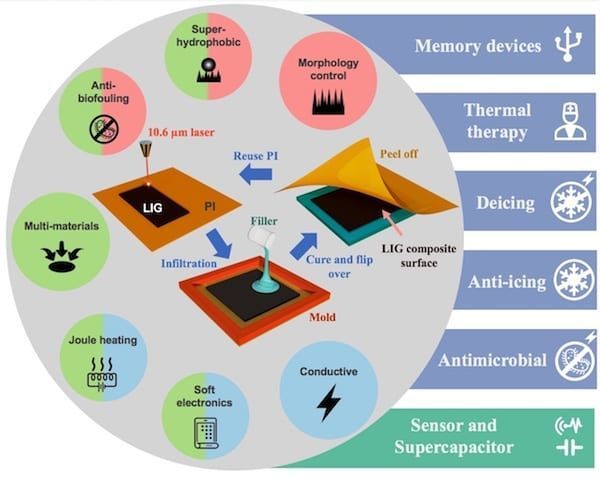
Laser-induced graphene gets tough, with help
"Rice lab combines conductive foam with other materials for capable new composites Laser-induced graphene (LIG), a flaky foam of the atom-thick carbon, has many interesting properties on its own but gains new powers as part of a composite. The labs of Rice University chemist James Tour and Christopher Arnusch, a professor at Ben-Gurion University of the Negev in Israel, introduced a batch of LIG composites in the American Chemical Society journal ACS Nano that put the material’s capabilities into more robust packages. By infusing LIG with plastic, rubber, cement, wax or other materials, the lab made composites with a wide range of possible applications. These new composites could be used in wearable electronics, in heat therapy, in water treatment, in anti-icing and deicing work, in creating antimicrobial surfaces and even in making resistive random-access memory devices. The Tour lab first made LIG in 2014 when it used a commercial laser to burn the surface of a thin sheet of common plastic, polyimide. The laser’s heat turned a sliver of the material into flakes of interconnected graphene." [...]
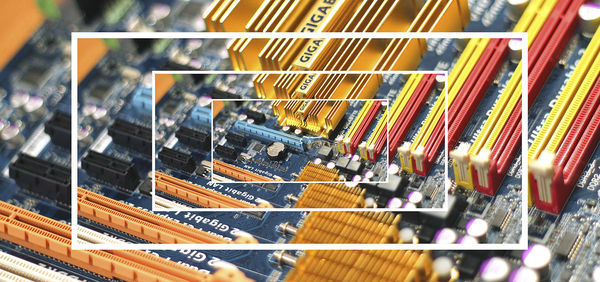
A Stanford-led engineering team unveils the prototype for a computer-on-a-chip
"Computers have shrunk to the size of laptops and smartphones, but engineers want to cram most of the features of a computer into a single chip that they could install just about anywhere. A Stanford-led engineering team has developed the prototype for such a computer-on-a-chip. Electronic computing was born in the form of massive machines in air-conditioned rooms, migrated to desktops and laptops, and lives today in tiny devices like watches and smartphones. But why stop there, asks an international team of Stanford-led engineers. Why not build an entire computer onto a single chip? It could have processing circuits, memory storage and power supply to perform a given task, such as measuring moisture in a row of crops." [...]
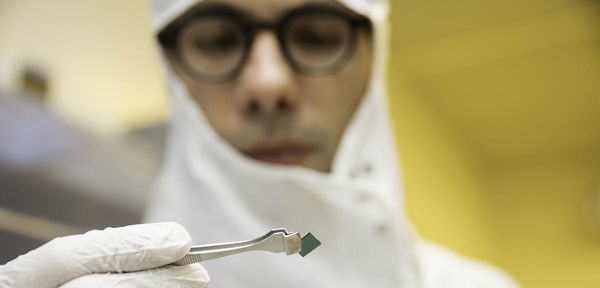
The Internet of Things Needs Better Power Supply
"Combining miniaturisation and wireless connection, mobile devices require quick and durable sources of electricity: micro-supercapacitors and microbatteries could provide the solution. An increasing number of electronic devices function independently, sometimes even without physical contact, with their interconnection making up what is known as the Internet of Things (IoT). Its plethora of applications range from a personal assistant connected to an e-commerce platform to sensors placed by researchers deep in the Amazon forest. Smartphones, to start with, are not limited to their owners’ voluntary communications, but constantly exchange with the external world to check whether their apps are up to date, or to sync accounts. The success of wireless access is also accompanied by growing miniaturisation, in order to make these mobile objects almost undetectable. But they still need a source of electricity to function." [...]
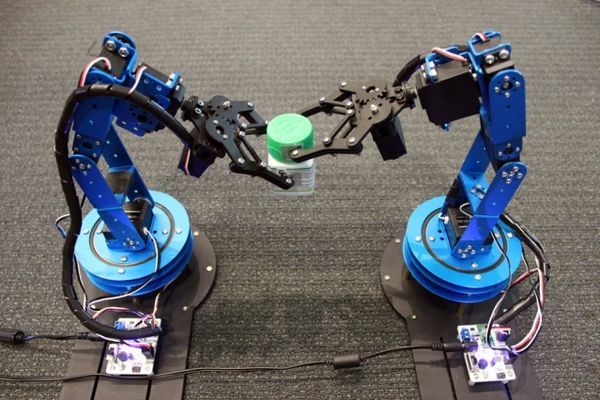
Robots track moving objects with unprecedented precision
"System uses RFID tags to home in on targets; could benefit robotic manufacturing, collaborative drones, and other applications. A novel system developed at MIT uses RFID tags to help robots home in on moving objects with unprecedented speed and accuracy. The system could enable greater collaboration and precision by robots working on packaging and assembly, and by swarms of drones carrying out search-and-rescue missions. In a paper being presented next week at the USENIX Symposium on Networked Systems Design and Implementation, the researchers show that robots using the system can locate tagged objects within 7.5 milliseconds, on average, and with an error of less than a centimeter. In the system, called TurboTrack, an RFID (radio-frequency identification) tag can be applied to any object. A reader sends a wireless signal that reflects off the RFID tag and other nearby objects, and rebounds to the reader." [...]

In the blink of an eye: uOttawa team uses quantum of light to create new quantum simulator
"Imagine being stuck inside a maze and wanting to find your way out. How would you proceed? The answer is trial and error. This is how traditional computers with classical algorithms operate to find the solution to a complex problem. Now consider this: What if, by magic, you were able to clone yourself into multiple versions so that you were able to go through all the various paths at the same time? You’d find the exit almost instantly." [...]

Breakthrough in the search for graphene-based electronics
"A team of researchers from Denmark has solved one of the biggest challenges in making effective nanoelectronics based on graphene. The new results have just been published in Nature Nanotechnology. For 15 years, scientists have tried to exploit the "miracle material" graphene to produce nanoscale electronics. On paper, graphene should be great for just that: it is ultra-thin - only one atom thick and therefore two-dimensional, it is excellent for conducting electrical current, and holds great promise for future forms of electronics that are faster and more energy efficient. In addition, graphene consists of carbon atoms – of which we have an unlimited supply. In theory, graphene can be altered to perform many different tasks within e.g." [...]

NASA to Advance Unique 3D Printed Sensor Technology
"A NASA technologist is taking miniaturization to the extreme. Mahmooda Sultana won funding to advance a potentially revolutionary, nanomaterial-based detector platform. The technology is capable of sensing everything from minute concentrations of gases and vapor, atmospheric pressure and temperature, and then transmitting that data via a wireless antenna — all from the same self-contained platform that measures just two-by-three-inches in size. Under a $2 million technology development award, Sultana and her team at NASA’s Goddard Space Flight Center in Greenbelt, Maryland, will spend the next two years advancing the autonomous multifunctional sensor platform. If successful the technology could benefit NASA’s major science disciplines and efforts to send humans to the Moon and Mars. These tiny platforms could be deployed on planetary rovers to detect small quantities of water and methane, for example, or be used as monitoring or biological sensors to maintain astronaut health and safety." [...]
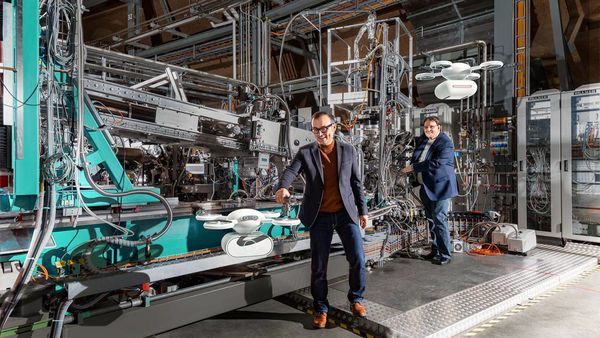
Watching electrons and switching bits on
"Electronics should get smaller, faster, and above all more energy-efficient. These themes are also present in several research groups at the Paul Scherrer Institute PSI. From incremental improvements to complete rethinking – who is currently working on what? Yasin Ekinci holds a slice of silicon in his hand. The interim head of the PSI Laboratory for Micro and Nanotechnology describes how computer chips are made from such discs. For around sixty years, manufacturers have used photolithography to do this." [...]

NIST 'Astrocomb' Opens New Horizons for Planet-Hunting Telescope
"The hunt for Earth-like planets, and perhaps extraterrestrial life, just got more precise, thanks to record-setting starlight measurements made possible by a National Institute of Standards and Technology (NIST) “astrocomb.” NIST’s custom-made frequency comb—which precisely measures frequencies, or colors, of light—ensures the precision of starlight analysis by an instrument called a spectrograph at the Hobby-Eberly Telescope in Texas. The project is a collaboration involving NIST, the University of Colorado Boulder (CU) and Pennsylvania State University, the primary partner in the telescope and spectrograph. The new comb apparatus for the first time provides the precision needed for discovering and characterizing planets orbiting M dwarf stars, which comprise 70 percent of the stars in the galaxy and are plentiful near Earth, the research team reported in Optica. “The comb immediately allowed our Penn State colleagues to make measurements they could not otherwise make,” NIST Fellow Scott Diddams said. “These improved tools should allow us to find habitable planets around the most ubiquitous stars in our galaxy.” A star's nuclear furnace emits white light, which is modified by elements in the atmosphere that absorb certain narrow bands of color. To search for planets orbiting distant stars, astronomers look for periodic changes in this characteristic "fingerprint," that is, very small variations in the apparent colors of starlight over time." [...]
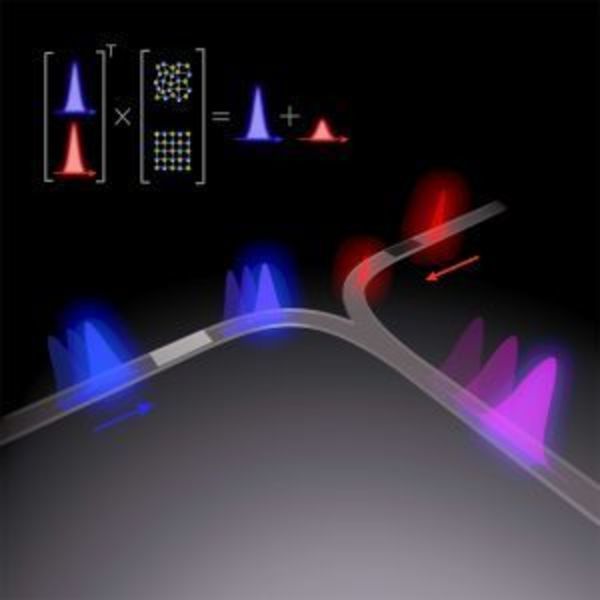
In-Memory Computing Using Photonic Memory Devices
"Could light be the answer to the future of more energy-efficient and faster computing? Today, our collaborative team of scientists led by Oxford and IBM Research-Zurich, with colleagues at Exeter and Munster, published a new research paper that points to its potential. Together we have developed an all-optical approach to developing direct in-memory multiplication on an integrated photonic device based on non-volatile multilevel phase-change memories. Electronic phase change memory (PCM) is an emerging non-volatile memory technology that could play a significant role in future computing systems. Using integrated photonic technology will potentially offer attractive solutions for using light to carry out computational tasks on a chip in future. This concept of implementing in-memory computing on an integrated photonic chip has the ability to further transform the computing landscape, especially since speeds and bandwidths working directly on an optical domain are increased." [...]

Firefly-inspired surfaces improve efficiency of LED lightbulbs
"A new type of light-emitting diode lightbulb could one day light homes and reduce power bills, according to Penn State researchers who suggest that LEDs made with firefly-mimicking structures could improve efficiency. "LED lightbulbs play a key role in clean energy," said Stuart (Shizhuo) Yin, professor of electrical engineering. "Overall commercial LED efficiency is currently only about 50 percent. One of the major concerns is how to improve the so-called light extraction efficiency of the LEDs. Our research focuses on how to get light out of the LED." Fireflies and LEDs face similar challenges in releasing the light that they produce because the light can reflect backwards and is lost." [...]
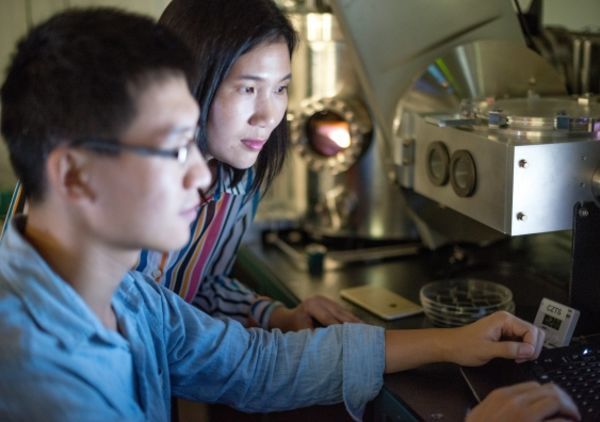
A flexible future
"Thin, flexible panels that will revolutionise how we use solar energy are on the drawing board at UNSW. Imagine a future in which thin, flexible solar panels cover the surfaces of cars and buildings, powering their activities. Xiaojing Hao, associate professor and Scientia fellow in the School of Photovoltaic and Renewable Energy Engineering, and her team, are building such cells made of kesterite photovoltaics. Containing copper, zinc, tin and sulphur, they are cheaper to make and more environmentally friendly than other thin-film varieties on the market, some of which contain toxic materials, such as cadmium, or rare elements, such as indium and tellurium. There are significant industrial applications for flexible, thin photovoltaic cells. But a key challenge has been their limited capacity to generate energy with a comparable efficiency and cost to that of conventional silicon solar panels." [...]
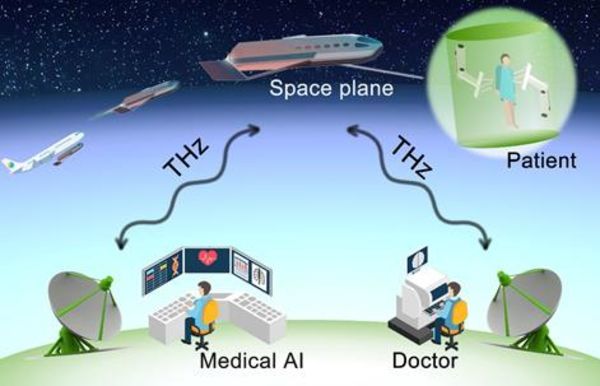
Terahertz wireless makes big strides in paving the way to technological singularity
"Hiroshima University, National Institute of Information and Communications Technology, and Panasonic Corporation announced the successful development of a terahertz (THz) transceiver that can transmit or receive digital data at 80 gigabits per second (Gbit/s). The transceiver was implemented using silicon CMOS integrated circuit technology, which would have a great advantage for volume production. Details of the technology will be presented at the International Solid-State Circuits Conference (ISSCC) 2019 to be held from February 17 to February 21 in San Francisco, California [1]. The THz band is a new and vast frequency resource expected to be used for future ultrahigh-speed wireless communications. IEEE Standard 802.15.3d, published in October 2017, defines the use of the lower THz frequency range between 252 gigahertz (GHz) and 325 GHz (the "300-GHz band") as high-speed wireless communication channels. The research group has developed a single-chip transceiver that achieves a communication speed of 80 Gbit/s using the channel 66 defined by the Standard." [...]
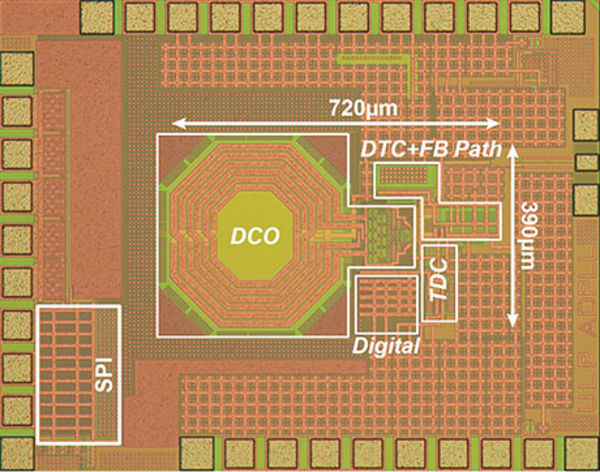
An ultra-low-power frequency synthesizer targeted for IoT devices: Digital PLL achieves a power consumption of 0.265 mW
"Scientists at Tokyo Tech have developed an advanced phase-locked loop (PLL)1 frequency synthesizer that can drastically cut power consumption. This digital PLL could be an attractive building block for Bluetooth Low Energy (BLE) and other wireless technologies to support a wide range of Internet of Things (IoT) applications. As a key building block of wireless communication systems, frequency synthesizers need to satisfy demanding requirements. Although analog PLL frequency synthesizers have been the standard for many years, engineers in the IoT industry are increasingly turning their attention to so-called digital PLLs (DPLLs) to achieve ultra-low power operation. Kenichi Okada, associate professor at Tokyo Tech's Department of Electrical and Electronic Engineering and his group now report a fractional-N DPLL2 that achieves a power consumption of only 265 microwatts(μW), a figure that is less than half the lowest power consumption achieved to date (980 μW). The researchers found that overall power consumption could be greatly reduced by using an automatic feedback control system." [...]
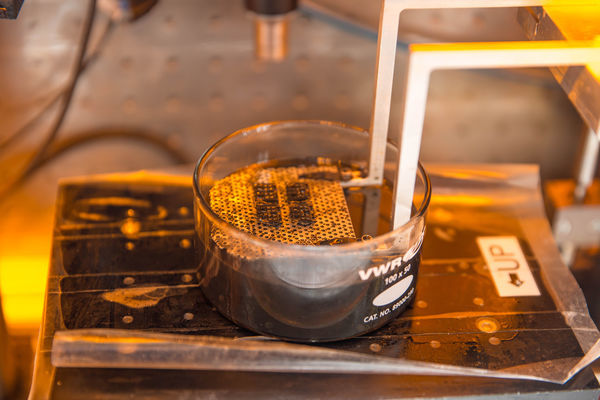
Researchers look to computing's past to unlock 3D-printed mechanical logic gates for the future
"Taking a page from the past, Lawrence Livermore National Laboratory scientists and engineers are combining mechanical computing with 3D printing as part of an effort to create “sentient” materials that can respond to changes in their surroundings, even in extreme environments that would destroy electronic components, such as high radiation, heat or pressure. Original computers, like Charles Babbage’s Difference Engine, were fully mechanical, filled with gears and levers that turned, moved and shifted to solve complex mathematical calculations. After World War II and the rise of vacuum tubes and electronic circuits, mechanical computers mostly went the way of the dodo. However, putting a new twist on the old technology, Lawrence Livermore National Laboratory (LLNL) researchers and contributors from the University of California, Los Angeles (UCLA) are 3D printing mechanical logic gates — the basic building blocks of computers capable of performing any kind of math calculations. Like LEGOs, these 3D-printed logic gates could be used to build just about anything, researchers said, embedded into any type of architected material and programmed to react to its environment by physically changing shape without the need for electricity -- useful in areas of high radiation, heat or pressure. The research was published online today by the journal Nature Communications." [...]

What's Better Than 40 GPU-based Computers? A Computer With 40 GPUs
"Engineers aim to use “silicon interconnect fabric” to build a computer with 40 GPUs on a single silicon wafer Back in the 1980s, parallel computing pioneer Gene Amdahl hatched a plan to speed mainframe computing: a silicon-wafer-sized processor. By keeping most of the data on the processor itself instead of pushing it through a circuit board to memory and other chips, computing would be faster and more energy efficient. With US $230 million from venture capitalists, the most ever at the time, Amdahl founded Trilogy Systems to make his vision a reality. This first commercial attempt at “wafer-scale integration” was such a disaster that it reportedly introduced the verb “to crater” into the financial press lexicon. Engineers at University of Illinois Urbana-Champaign and at University of California Los Angeles think it’s time for another go. At the IEEE International Symposium on High-Performance Computer Architecture in February, Illinois computer engineering associate professor Rakesh Kumar and his collaborators will make the case for a wafer-scale computer consisting of as many as 40 GPUs." [...]

Newly Discovered Design Rules Lead to Better Fuel Cell Catalyst
"Optimized oxides made from common metals use less energy and show the potential of new design approach. The Science To create better batteries and fuel cells, scientists must make oxygen molecules gain and lose electrons efficiently. The reactions are frustratingly sluggish. Speeding the reactions requires heat and platinum, which are costly. Now, researchers uncovered vital design principles to engineer catalysts that use more readily available metals and less heat. The catalysts performed well and were stable over the long term." [...]
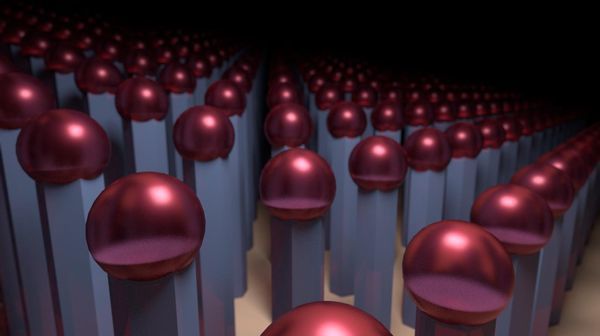
The holy grail of nanowire production
"EPFL researchers have found a way to control and standardize the production of nanowires on silicon surfaces. This discovery could make it possible to grow nanowires on electronic platforms, with potential applications including the integration of nanolasers into electronic chips and improved energy conversion in solar panels. Nanowires have the potential to revolutionize the technology around us. Measuring just 5-100 nanometers in diameter (a nanometer is a millionth of a millimeter), these tiny, needle-shaped crystalline structures can alter how electricity or light passes through them. They can emit, concentrate and absorb light and could therefore be used to add optical functionalities to electronic chips. They could, for example, make it possible to generate lasers directly on silicon chips and to integrate single-photon emitters for coding purposes." [...]
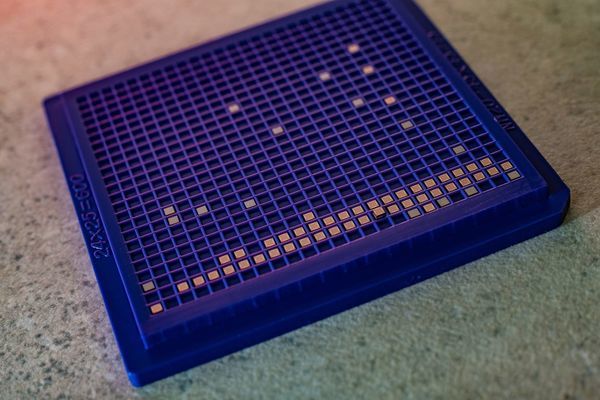
Rice U. researchers unveil Internet of Things security feature
"‘Physically unclonable function’ is 10 times more reliable than previous methods Rice University integrated circuit (IC) designers are at Silicon Valley’s premier chip-design conference to unveil technology that is 10 times more reliable than current methods of producing unclonable digital fingerprints for Internet of Things (IoT) devices. Rice’s Kaiyuan Yang and Dai Li will present their physically unclonable function (PUF) technology today at the 2019 International Solid-State Circuits Conference (ISSCC), a prestigious scientific conference known informally as the “Chip Olympics.” PUF uses a microchip’s physical imperfections to produce unique security keys that can be used to authenticate devices linked to the Internet of Things. Considering that some experts expect Earth to pass the threshold of 1 trillion internet-connected sensors within five years, there is growing pressure to improve the security of IoT devices. Yang and Li’s PUF provides a leap in reliability by generating two unique fingerprints for each PUF. This “zero-overhead” method uses the same PUF components to make both keys and does not require extra area and latency because of an innovative design feature that also allows their PUF to be about 15 times more energy efficient than previously published versions. “Basically each PUF unit can work in two modes,” said Yang, assistant professor of electrical and computer engineering." [...]

Quantum dots used to track flowers' pollen
"A pollination biologist from Stellenbosch University is using quantum dots to track the fate of individual pollen grains. This is breaking new ground in a field of research that has been hampered by the lack of a universal method to track pollen for over a century. In an article published in the journal Methods in Ecology and Evolution this week, Dr Corneile Minnaar describes this novel method, which will enable pollination biologists to track the whole pollination process from the first visit by a pollinator to its endpoint – either successfully transferred to another flower's stigma or lost along the way. Despite over two hundred years of detailed research on pollination, Minnaar says, researchers do not know for sure where most of the microscopically tiny pollen grains actually land up once they leave flowers: “Plants produce massive amounts of pollen, but it looks like more than 90% of it never reaches stigmas. For the tiny fraction of pollen grains that make their way to stigmas, the journey is often unclear—which pollinators transferred the grains and from where?" Starting in 2015, Minnaar decided to tread where many others have thus far failed, and took up the challenge through his PhD research in the Department of Botany and Zoology at Stellenbosch University (SU)." [...]

Tinier and less power-hungry quantum atomic clock push toward intelligent IoT
"Scientists at Tokyo Tech, Ricoh co. and The National Institute of Advanced Industrial Science and Technology have developed an ultra-low-power atomic clock (ULPAC) for small satellites to enable future communication systems beyond 5G. The proposed device outperforms the current industry standards in various benchmarks, such as size, stability, and power consumption. As current telecommunication technologies continue to evolve, the speed and sheer amount of data required by users worldwide increase accordingly. One promising method for satisfying this ever-growing demand is by deploying a constellation of nano- or micro-scale satellites that circle the planet in low earth orbit. However, such a swarm of satellites requires extremely precise synchronization to a global time standard, for which a very precise atomic clock on board each unit is necessary. Because conventional atomic clocks are too large (155–755 cm3) and consume too much power (up to 10 W) to be employed on small satellites, researchers have developed quantum atomic clocks with greatly reduced size and power consumption by employing a method called coherent population trapping." [...]

AI May Be Better for Detecting Radar Signals, Facilitating Spectrum Sharing
"When vacationers buy a stake in a beachfront timeshare, they decide in advance who gets to use the property when. The National Institute of Standards and Technology (NIST) is helping the Federal Communications Commission (FCC) institute a similar plan for when commercial wireless providers and the U.S. Navy attempt to share a desirable 150-megahertz (MHz)-wide section of the radio frequency (RF) spectrum for communications. In a new paper, NIST researchers demonstrate that deep learning algorithms—a form of artificial intelligence—are significantly better than a commonly used, less sophisticated method for detecting when offshore radars are operating. Improved radar detection would enable commercial users to know when they must yield the so-called 3.5 Gigahertz (3.5 GHz) Band. In 2015, the FCC adopted rules for the Citizens Broadband Radio Service (CBRS) to permit commercial LTE (long-term evolution) wireless equipment vendors and service providers to use the 3.5 GHz Band when not needed for radar operations. Companies such as AT&T, Google, Nokia, Qualcomm, Sony and Verizon have been eager to access this band (between 3550 and 3700 MHz) because it will expand product markets and give end users better coverage and higher data rate speeds in a variety of environments where service is traditionally weak." [...]

New measurement technique for topological quantum systems
"Researchers at Universität Hamburg have demonstrated a new scheme for measuring the topological index of a system. The index describes the topological nature of materials and influences certain properties such as the conductivity. The scientists report their findings, which may lead to important applications in metrology and possible prospects for quantum computers, in the journal Nature Physics. The experiments were performed with ultracold atoms in optical lattices formed by standing waves of light. The researchers subject the system to an additional circular drive and then determine the topology from how fast the system heats up. Illustration: UHH/Sengstock group Among the branches of mathematics, geometry is the one that deals with local properties of shapes like distances, angles and curvatures, while topology classifies shapes according to global properties." [...]

Thermally-Painted Metasurfaces Yield Perfect Light Absorbers for High-Tech Applications
"Researchers have discovered that the ancient technique of heating metal to create vibrant colors creates a nanostructured surface that acts as a perfect light absorber. Perfect light absorbers — materials that absorb more than 99% of a certain color — can be used for sensing, solar panels, anti-counterfeiting and stealth technologies In the journal Optical Materials Express, researchers from Case Western Reserve University in Ohio report their insights into how colors are generated on heated metal surfaces and apply those findings to create a nickel thin-film that perfectly absorbs red light. “We found that a 3,000-year-old metallurgy technique is actually one of the simplest examples of a metasurface — artificial surfaces with subwavelength features that impart unique electromagnetic properties,” said Giuseppe Strangi, a member of the Case Western Reserve University research team. “Creating color changes by depositing a single metal layer opens up new aesthetic possibilities in metalworking, as well as applications such as shielding devices from electromagnetic signals that cause noise and interference.” Unlike the iridescent colors of water bubbles and butterfly wings, which change depending on the viewing angle, the thin oxide films produced by heating metal maintain their colors at all angles. This could make the heat-induced color useful for making holograms to protect currency and metal products from counterfeiting. A simple approach Scientists have previously demonstrated perfect light absorption using ultrathin absorptive materials on metals or with highly-engineered nanostructures." [...]
Documentação
A documentação é parte essencial do processo de aprendizagem e a Internet além de artigos interessantes de explorar também tem alguma documentação em formato PDF interessante de ler. Todos os links aqui apresentados são para conteúdo disponibilizado livremente pelo editor do livro.
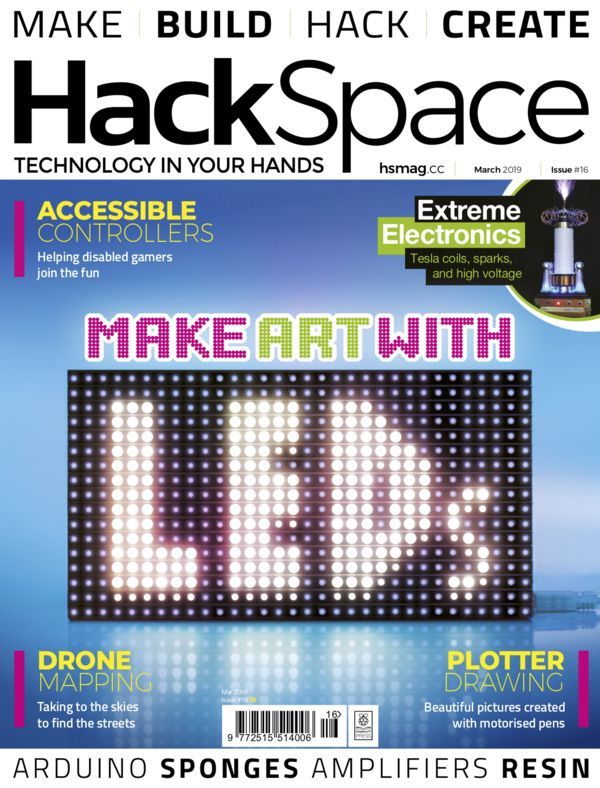
HackSpace magazine #16
"LEDs are often the first component beginner's use, but they can also be highly expressive. We look at what it takes to make LED art We also chat with Jasmine Brackett from Tindie and take a look at how drones are improving lives in East Africa Designing an amplifier Cosplay Arduino Upcycling" [...]

The Little Go Book
"The Little Go Book is a free introduction to Google's Go programming language. It's aimed at developers who might not be quite comfortable with the idea of pointers and static typing. It's longer than the other Little books, but hopefully still captures that little feeling. " [...]

Go Bootcamp
"Everything you need to know to get started with Go. This book is a companion book to the Go Bootcamp event organized for the first time in Santa Monica CA in March 2014. You don’t need to install Go to read this book and follow along. This book was designed to delay the setup process and let you evaluate Go without having to go through the installation process. All examples and solutions are available online in an environment allowing you to execute code right in the browser. " [...]

Building Web Apps with Go
"Welcome to Building Web Apps with Go! If you are reading this then you have just started your journey from noob to pro. No seriously, web programming in Go is so fun and easy that you won't even notice how much information you are learning along the way! Keep in mind that there are still portions of this book that are incomplete and need some love. The beauty of open source publishing is that I can give you an incomplete book and it is still of value to you. " [...]

Build Web Application with Golang
"Because I'm interested in web application development, I used my free time to write this book as an open source version. It doesn't mean that I have a very good ability to build web applications; I would like to share what I've done with Go in building web applications. For those of you who are working with PHP/Python/Ruby, you will learn how to build a web application with Go. For those of you who are working with C/C++, you will know how the web works. I believe the purpose of studying is sharing with others. The happiest thing in my life is sharing everything I've known with more people." [...]
Projetos Maker
Diversos Projetos interessantes.
Muslin Clock - LED NeoPixel
"The design and creation of this instructable was created for the purpose of an Open Design and Digital Fabrication paper at Massey University, NZ. Based in the Fab Lab WGTN, the aim of the paper was to utilise open design methodologies and digital fabrication tools to produce an open design project. The design was inspired by this instructable and was adapted in both code and form. This instructable will give you the necessary tools and information to create your own LED NeoPixel Clock. If you're wanting to see more of my overall process while creating this instructable you can check out my blog. I've posted all of the research sources that I used to help me understand the project and technology." [...]
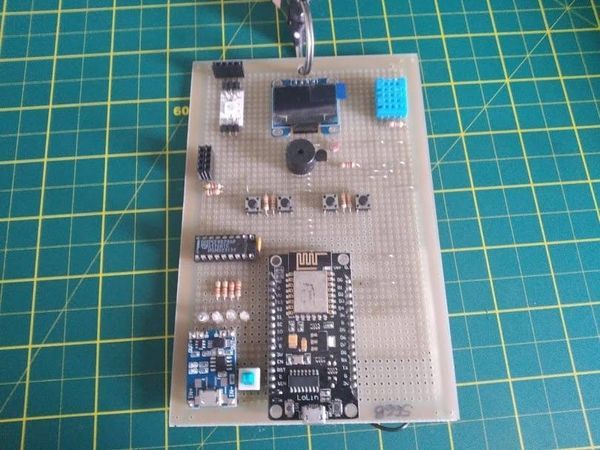
DIY ESP8266-Based Badge
"This badge is a DIY dev board for MicroPython. Based on ESP8266, it has a lot of features which are possible to learn and have fun with! Story This badge was developed due to my need for a board to learn about MicroPython with an ESP8266. Although it's easy to test using a breadboard, I needed a more robust board that I could bring with me outside the lab and for a demonstration at a event. I didn't have time to make a layout, send to manufacture, and assemble the board. And for now, I only need one board." [...]
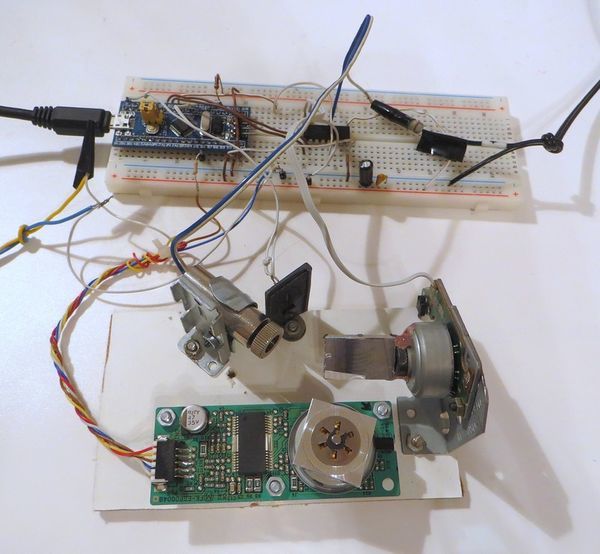
Making a DIY text laser projector
"Let’s find out how to make a simple enough laser projector out of electronics you can find at home. Introduction There are two ways to create an image with a laser — vector scan and raster scan. During vector scanning, the laser moves along the outlines of the image, only turning off while moving from one outline to the next. That means that the laser is on most of the time, making for a rather bright resulting image. That method is most often used in large-scale, industrial laser projectors, but it requires the use of a rather complex electro-mechanical device — the galvanometer — to move the laser quickly. Prices start from $80 a pair and it’s very impractical (though possible) to make at home." [...]

FabGL - ESP32 VGA Controller and Graphics Library
"This is a VGA Controller, PS/2 Keyboard Controller, Graphics Library, Game Engine and ANSI/VT Terminal for the ESP32. This library works well with ESP32 revision 1 or upper. VGA output requires a digital to analog converter (DAC): it can be done by three 270 Ohm resistors to have 8 colors, or by 6 resistors to have 64 colors. Three fonts are embedded to best represents 80x25 or 132x25 text screen, at 640x350 resolution. However other fonts and resolutions can be used. Sprites can have up to 64 colors (RGB, 2 bits per channel + transparency)." [...]
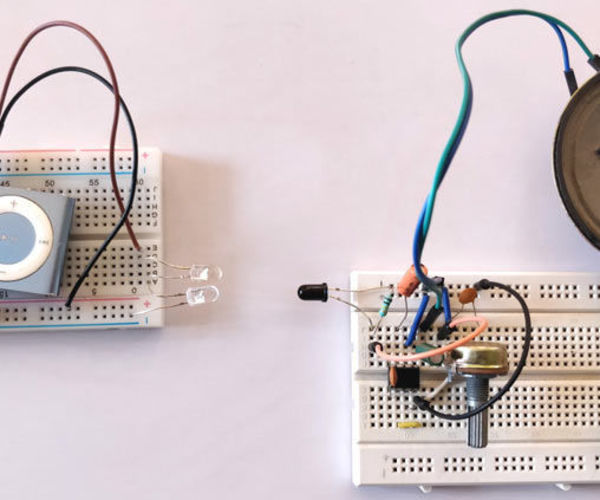
IR Based Wireless Audio Transmitter and Receiver
"Wireless Audio is already a technically advanced field where Bluetooth and RF Communications are the main technologies (although most commercial audio equipment works with Bluetooth). Designing a simple IR Audio Link Circuit would not be beneficial when compared to the existing technologies but it surely will be a learning experience about the wireless audio transfer. The reason for not being beneficial is the fact that unlike Bluetooth, IR is line-of-sight communication i.e. both the transmitter and receiver must always face each other without any obstacles. Also, the range may not the as large as that of a typical Bluetooth Wireless Audio. None the less, for the purpose of understanding, let me design a simple IR Audio Link circuit using easily available components." [...]
Fabric Neopixel Clock
"This is a fabric, torus shaped, Neopixel clock. I have designed and created this for a paper at CoCA Massey University with the resources and guidance of fablabwgtn. Materials: - Felt - Needle and thread - 3mm corrugated cardboard - 3mm clear acrylic - 3mm MDF - Hot glue gun - Arduino nano - male to male wires - RTC + battery" [...]
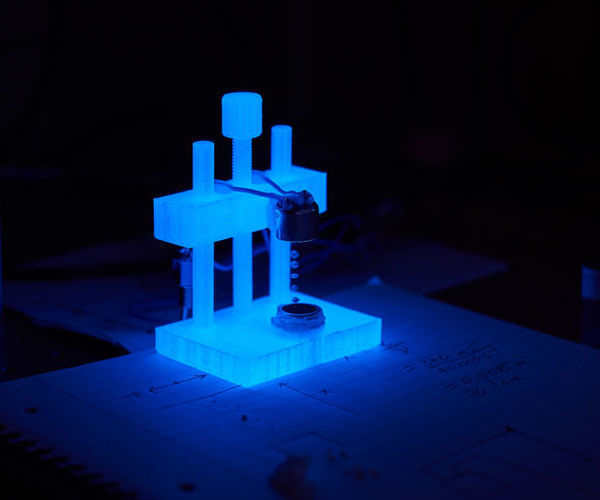
Simple Acoustic Levitation! Float Things With Sound, Float Sound With Sound
"Floating things with sound might seem like science fiction or something you could only find in a physics lab, but actually many people have shown that its easy to diy. There are simple designs: www.instructables.com/id/Easy-Acoustic-Levitator/ www.instructables.com/id/Mini-Acoustic-Levitation/ and there are not quite as simple designs: www.instructables.com/id/Acoustic-Levitator/ In this project I'm aiming for something in-between along with some cool demonstrations. If you just want a quick overview then check out the post on my website. The physics behind acoustic levitation gets a little complicated but the general idea is that if you take a sound wave and reflect it back into itself, this will setup a stationary wave. Somewhere along that wave there will be a condition (or several of them) where the forces are directed towards a single point, and if the acoustic power is high enough, this can overcome gravity and we get stable levitation. " [...]
Neopixel LED Heart
"Neopixels are color-changing, individually addressable (programmable) LED lights. They are available in various forms from Adafruit.com, but I am particularly fond of the 8-mm "through the hole" traditional LED style. They are bright and beautiful, and you can make your own custom designs as illustrated by the Heart shape example provided herein. Arduino software is typically used to control the LED's. Please see my YouTube video of the Neopixel LED Heart in light show action. Another fun way to view the Heart it is to point it at a window such as a sliding glass door to see a double-heart image reflection (as shown)." [...]

Open DSO-150
"An open source firmware for JYE Tech DSO-150 Digital Storage Oscilloscope Fully open source firmware for JYETECH DSO-150 https://www.jyetech.com/Products/LcdScope/e150.php Complete rewrite of DSO-150 Firmware - No longer DSO-138 compatible (Sorry...) - Rewritten for Atollic trueSTUDIO (Yea... Real debugging) - Now using internal digital trigger through ADC IRQ (So trigger level can now be correlated to real voltage) - Lots of new features like voltage overlay, markers, auto cal Features - Support 1 Analog and up to 3 Digital Channels - Trigger on rising/falling/both edges - Trigger on Analog, Digital 1,2,3 Signal - Single/Norm/Auto Trigger Mode - Exact trigger voltage - Serial Data Dump - Automatic Zero-Level Cal for all gain-stages - Voltmeter mode (Averaged over last 10 samples) - Signal Statistics Display - Cursors for Analog Signal - Load/Store Waveform to/from Flash - Zoom Out Display (See more data with full sampling Rate) - "Persistence" Mode - Variable Signal Size for Digital Signal Waveforms - "loop" mode to scroll current input-values - AC/DC mode - 3K Sampling Depth - Buttons not blocked during sampling" [...]

Play multiple sound files on multiple output devices with Python and sounddevice
"Ever wanted to have multiple different sound files playing on different output devices attached to a host computer? Say you’re writing a DJing application where you want one mix for headphones and one for the speakers. Or you’re doing some sort of kiosk or art installation where you have many sets of speakers that need to all be playing their own sound file but the whole thing needs to be synchronized. This would even be cool for something like an escape room. The ladder example is where I needed this bit of code. I’ve been working with interdisciplinary artist Sara Dittrich on a few projects recently and she asked if I could come up with a way to play 8 different mono sound files on 8 different loudspeakers." [...]
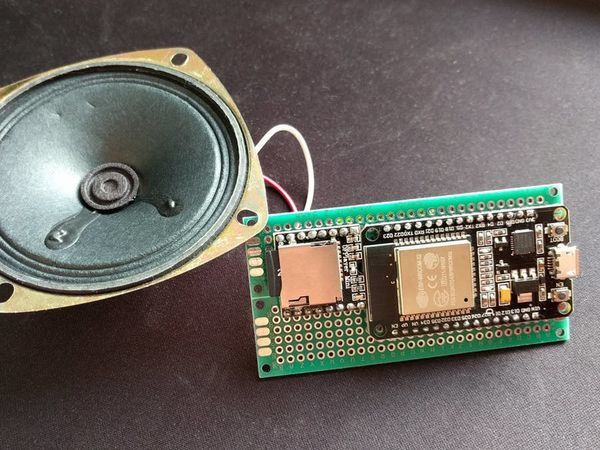
WiFi Doorbell with ESP32 and DFPlayer
"A doorbell that is triggered via WiFi by a remote microcontroller. Story When we moved in our house this year, one of the first things we missed was a doorbell. There was a bell button at the gate, but since the whole building had been gutted down to the concrete nobody knew where the cable ended. When I found a cut-off electric cable in the basement, I suspected that it could be the one leading to the button. With a little help of my beloved multimeter I could confirm that assumption. However, that lead to the next problem: Not only was the cable cut 2 cm off the wall, there was also no way to extend it to the first floor." [...]

Total Wireless Power Bank
"In this project, I have made the power bank with no switches. There are no charging ports on the power bank. It charges wirelessly and transmits wireless power to charge your mobile. This project involves lots of small parts and I have included all the steps involved in this project sequentially. I hope you will love to make one on your own. " [...]
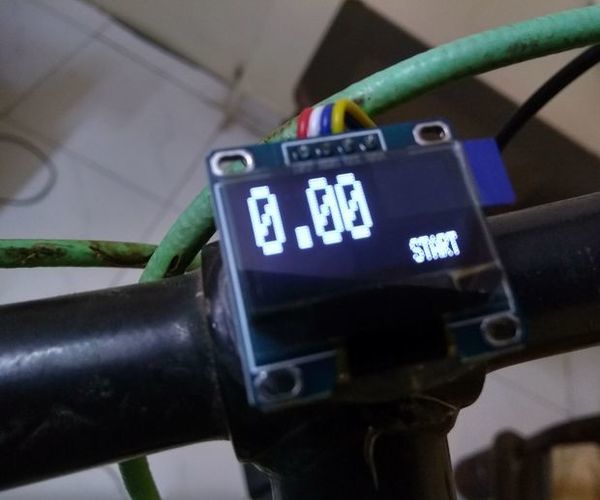
DIY Cycle Speedometer
"This project came to my mind when doing my MEM (Mechanical Engineering Measurement) project, a subject in my B.tech. The idea is to measure the angular velocity of my bicycle's wheel. Thus knowing the diameter and the all time mathematical legend the pi(3.14) the speed can be calculated. Also knowing the number of time the wheel has rotated, the distance traveled can be easily known. As an added bonus, I decided to add a beaklight to my cycle. Now the challenge was to when to turn the brake light." [...]

Make Your Own Launchpad
"In this episode of DIY or Buy I will be showing you how I created my own launchpad. That means I will show you how I combined a design idea with 3D Prints, WS2812 LEDs, tactile switches and an Arduino to create a proper MIDI instrument. While building I will also tell you a bit about a keyboard matrix and in the end determine what advantages the DIY Launchpad offers. Let's get started! " [...]
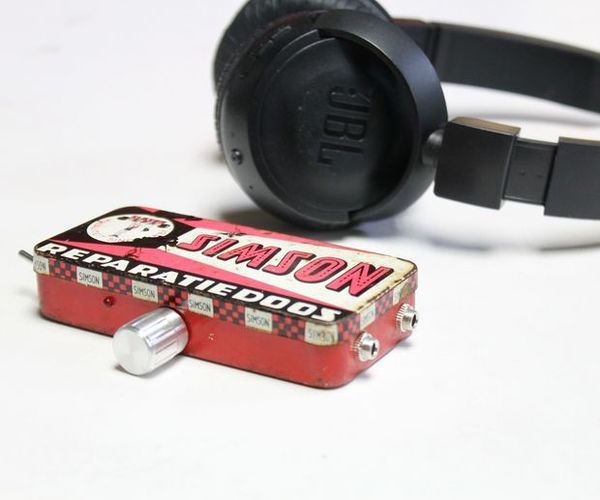
Make a Headphone Amp V2
"After discovering Cew27'sCmoy Headphone Amp a few months ago on Instructables, I've been inspired to build my own. I was also inspired by Koogars amazing Crystal CMoy Free Form Headphone Amplifier which I have been admiring for a few years now. I even did a bunch of projects using resin because of this project! This is my second headphone amp build my first can be found here. What I really like about this one compared to the first build is a couple of things. Firstly, its a simpler build and only needs one IC to run it, and second, you dont have to worry about separating the input and output grounds as I did with the first build." [...]

GMail Notification Using ESP8266 Arduino and OLED
"Nowadays, Every machine has some data to post over cloud and Data has to Analyse and has to record for many purpose. At the same time data should be accessible to the Analyzer as well. This things can be done using IOT concept. IOT is internet of things which talks with machine and post the data and get the data. " [...]

Midi Keypad
"In order to learn how to make MIDI instrument (musical instruments that can be used in music software), I tried to plug buttons on an Arduino Micro. I figure out, I could simply plug a keypad instead to have 16 buttons! Keypads don't works well when you want to use multiples buttons at the same time, but it still a lot of fun. " [...]

CaRo V0.1
"We live in an age in which robots seem to become competitors. But what if they become personal assistants for everyone? The basic idea of CaRo is to develop a cost-effective and easy to build robot. It is not a robotic arm that needs a lot of motors and a lot of material for a wide reach of action. CaRo is no bigger than a shoe box and still has a raach of action of several meters. The accuracy and reliability is not very high yet." [...]
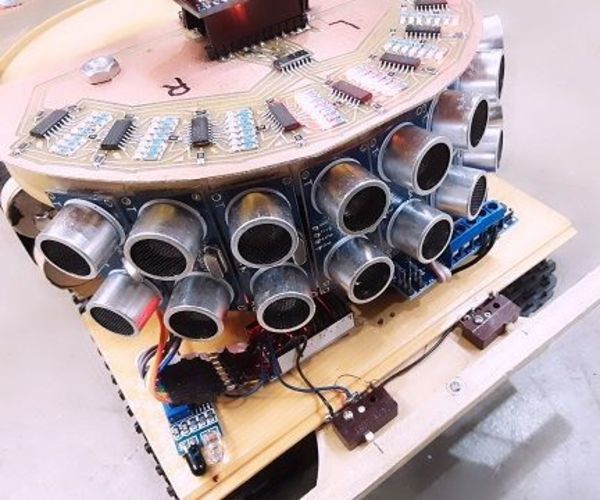
Sonic Led Feedback
"Hi again, Hate that your robot runs into everything? This will fix that problem. With 8 sonic sensors this looks complicated...but in fact I made this very easy. I try to post projects that help you learn about Arduino and show an 'outside the box' concept. This post will help you understand 595 switching, pro-minis as a programmable sensor, and the grand use of real time led feedback. If you enjoy Arduino as a 'copy and paste and plug-in' you might just skip this." [...]

TWIST - Tweeting Weather Station
"TWIST is a DIY, open source environmental monitoring and meteorological data acquisition platform which tweets local data. Ever wanted to monitor your city's Current Weather Conditions, Carbon Footprint, Noise and Pollution levels? Do you want be a Climate Change Crusader or set-up your own Tweeting Weather Station and share your local weather conditions with the world? Meet Tweeting Weather IoT Station aka TWIST - a DIY, Open-Source Environmental Monitoring and Meteorological Data Acquisition Platform. The purpose of TWIST is so that individuals and communities can collect data of what's actually happening in their environment and share this data on social media such as Twitter. The brain of TWIST is an Intel Edison Board." [...]
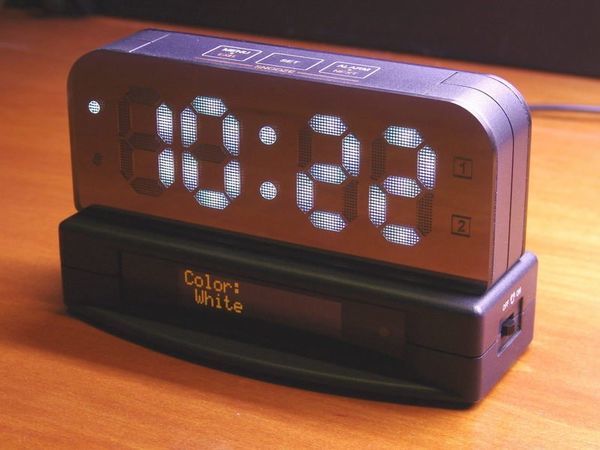
Another alarm clock project
"This is my third alarm clock design. It has an RGB 7-segments display made from WS2812 LEDs, a VS1053 chip to playback MP3’s as alarm sound, WiFi connectivity. It is easily programmable as the main board design is based on an Arduino mega. It has an onboard USB->serial adapter and is compatible with the Arduino IDE and all the libraries. The enclosure parts can be printed with your own 3D printer or by using an online 3D printing services. I included all the necessary STL files on the GitHub repository for this project." [...]

Mini Lathe Machine for Woodworking
"Hi Makers, We're interested in a homemade mini lathe project for a while. If you want to do small jobs and make yourself happy, this mini lathe is for you. Some of you will remember the CNC machine we have done before. You can check this link on instructable or above video. Watched 40 K times. We were very happy." [...]
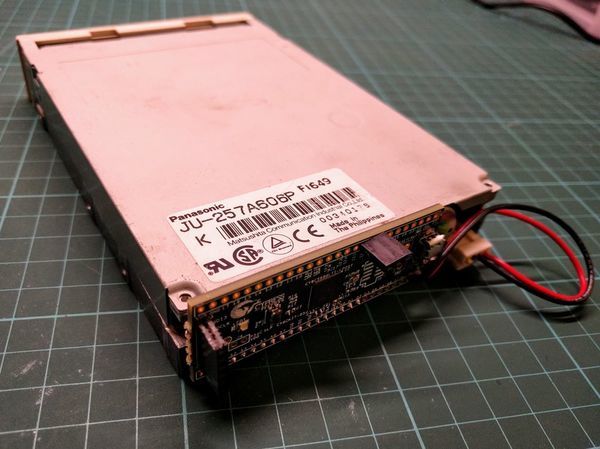
FluxEngine
"What? The FluxEngine is a very cheap USB floppy disk interface capable of reading and writing exotic non-PC floppy disk formats. It allows you to use a conventional PC drive to accept Amiga disks, CLV Macintosh disks, bizarre 128-sector CP/M disks, and other weird and bizarre formats. (Although not all of these are supported yet. I could really use samples.) Important note." [...]
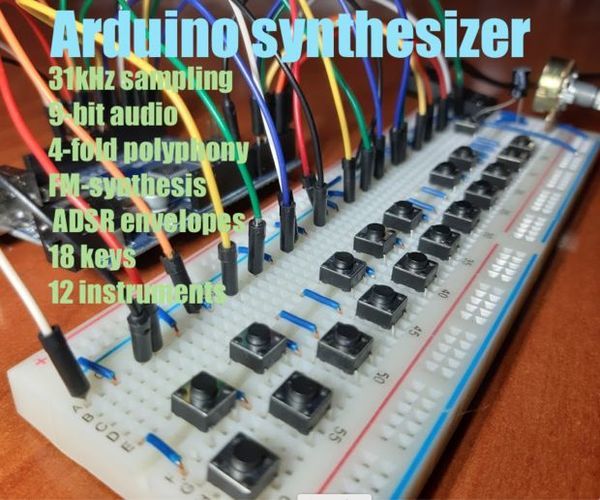
Arduino Synthesizer With FM
"It is quite possible to create decent sound with an Arduino as has been demonstrated in plenty of other projects, for example: The-Arduino-SynthesizerThe-Arduino-OctoSynthArduino-ChiptunesArduino-Step-Sequencer Here is another demonstration of how a common Arduino Uno (or clone) can be used to generate a wide range of musical sounds. The specs are as follows: 31kHz sampling rate 9-bit resolution 4-fold polyphony (4 different tones can play simulateneously) FM-synthesis with time-varying modulation amplitude ADSR envelopes 12 preset instruments 18 keys covering 1.5 octaveWatch and listen to the video for a demo! Of course it's nowhere close to the commercially digital synthesizers, but it's a big step from a simple 'beep' piano. Instruments are defined by a set of 10 parameters, and it's easy to create new sounds by changing the parameters. After playing around a bit I found came up with 12 instruments that sound good and named them as follows: piano xylophone guitar cymbal bell funky vibrato metal violin bass trumpet harmonicaPlease tell me in the feedback if you find new good sounds, then I can add them to the code. The project described has the 19-button keyboard built with microbuttons on breadboard, but it lends itself perfectly to be built into existing objects, like furniture, toys or vintage equipment." [...]
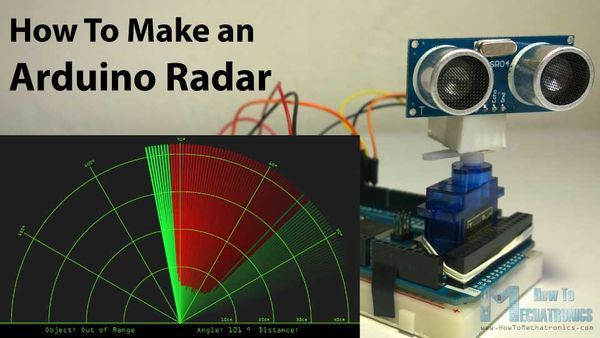
Arduino Radar Project
"In this Arduino Tutorial I will show you how you can make this cool looking radar using the Arduino Board and the Processing Development Environment. You can watch the following video or read the written tutorial below for more details. " [...]
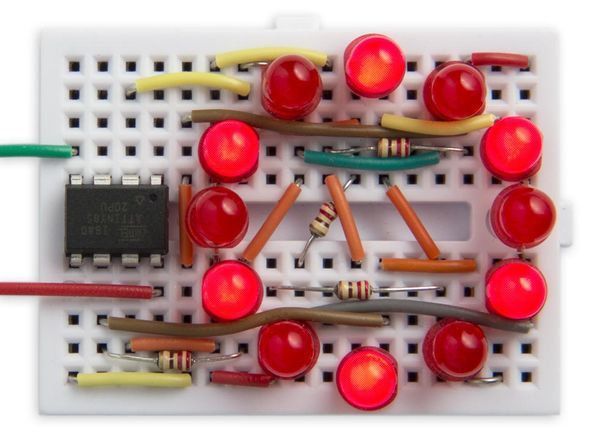
Twelve PWM outputs from an ATtiny85
"This project describes how to get 12 analogue PWM outputs from an ATtiny85, so you can drive 12 LEDs with individual control over each LED's brightness Each LED can be set to a brightness between 0 (off) and 63 (fully on). The demonstration program shows a rotating wave of light that moves around the circle. The circuit could be used for a range of applications, from interactive LED displays, jewellery, or controlling the lights in a dolls house. It leaves one free I/O line on the ATtiny85, so you could control the light display from a sensor, or serial input. Introduction The usual way of getting PWM outputs on the ATtiny and ATmega chips is to use the built-in hardware timers to generate a waveform output with an appropriate mark-space ratio. This is how the Arduino analogWrite() command works." [...]
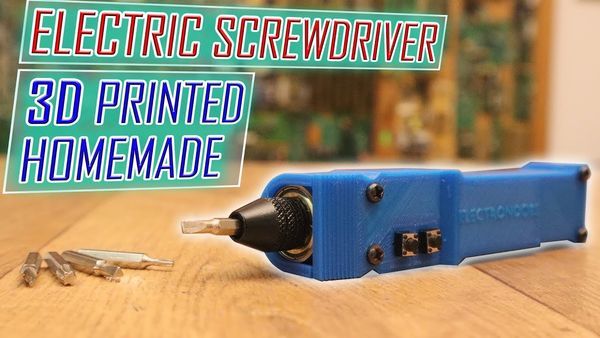
Homemade Electric Screwdriver 3D Printed
"Another basic tutorial. The circuit and design is very simple. We havea li-ion battery taht will supply everything. We also have a charging module for that battery. The project uses a DC motor with a high torque gear box so it is very powerful. To control rotation, an H-bridge is used so the direction can be controlled." [...]
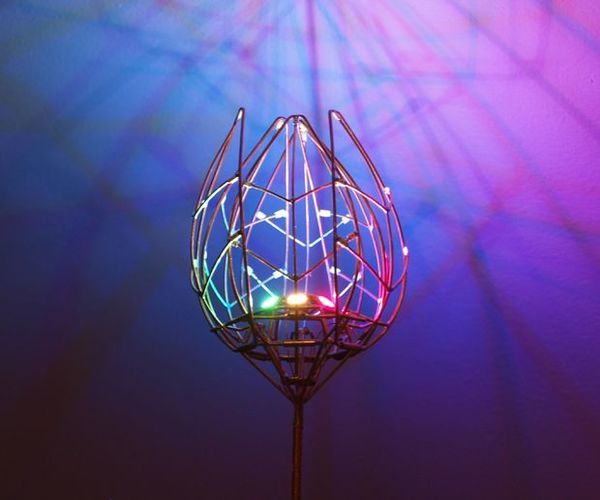
Ever Blooming Mechanical Tulip
"Everlasting flower for your everlasting love. A perfect not-only Valentine's day gift to your loved one. This mechanical tulip will bloom into any color possible with just gentle touch of your hand. Its six petals will slowly open and light up. When petals are closed they create incredible ambient light with leaf patterns. But before I will tell you how to create this beauty, let's talk briefly about how it works." [...]

USBerry PI - USB Rasberry Pi Zero(W)
"From time to time, I log online to window shop. We all have expensive guilty pleasures, right? I share things that catch my eye (#DailyTemptations)with you via my social channels. I also press the order now way too many times and end up split between 5 different projects at the same time! One of the recent items I bought was seriously too good not to! Im speaking about the RaspberryPI Zero to USB board." [...]
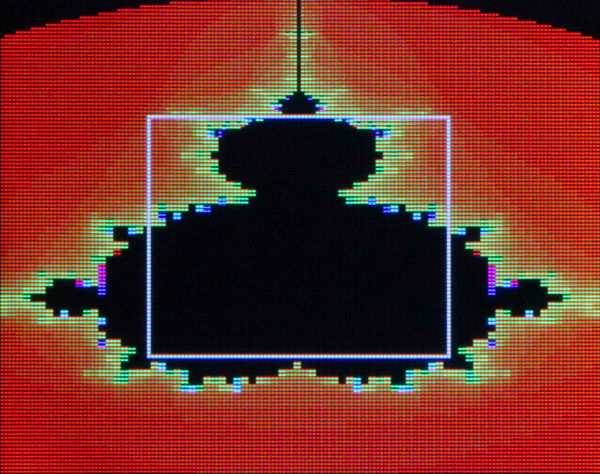
Everything You Should Know About HyperDisplay
"Nobody wants to reinvent the wheel, right? Well that's just what it felt like we were doing every time we wrote another (slightly different) graphics library for new products like the RGB OLED Breakout and ePaper displays. Not to mention that having to use specific code for each product makes it very hard to start using a new display in a project. Our HyperDisplay library is designed to put an end to all that - making it easy to add support for and use new displays! The goal of this tutorial is to get you up-to-speed on how to use HyperDisplay, from the basics all the way to being able to extend the library. Stick around to learn all about how to use this easy, powerful, and flexible new tool!" [...]
That's all Folks!


